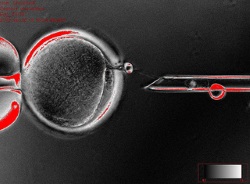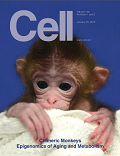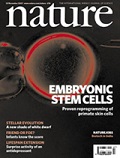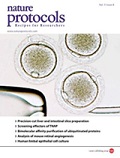About Us

The Center for Embryonic Cell and Gene Therapy at Oregon Health & Science University, led by Shoukhrat Mitalipov, Ph.D., pioneers therapies for infertility and heritable genetic conditions. Among the center’s breakthroughs:
- Producing rejection-proof, genetically matched human embryonic stem cells from skin cells using somatic cell nuclear transfer, or SCNT.
- Developing mitochondrial replacement therapies (MRT) that break the cycle of disease passed from mother to baby through mitochondrial DNA.
- Effectively repairing a disease-causing mutation in early human embryos
These are just some of the foundation-altering science to come out of this center. Our program connects basic cell science, translational research and clinical testing in a cycle of discovery and innovation. Research performed at the center will keep people healthier as they age, restore mobility for patients with Parkinson's disease or spinal injuries, provide choices to families who seek to have genetically related children, and stop familial diseases before they affect a new generation.
A groundbreaking discovery
In May 2013, Dr. Mitalipov and his team published a study in Cell that describes a new process for creating human stem cells from skin cells. Stem cells are thought to hold promise for treating various degenerative diseases, but finding a source of embryonic stem cells—which can be reprogrammed into any other cell type—has been an obstacle to progress in developing such treatments. The process described by Dr. Mitalipov, referred to as SCNT, removes chromosomes from a human donor's unfertilized egg and then replaces them with new DNA from a patient's skin cells. This discovery sparked more than 2,000 news reports internationally and was named a top 10 scientific breakthrough of 2013.
SCNT provides an alternative to stem cells derived from fertilized human embryos. It may also provide advantages over the induced pluripotent stem cell (iPSC) method, which involves genetic programming changes in mature skin cells to transform them to an embryonic-like state.
Breaking the cycle of disease
Dr. Mitalipov's work could, for the first time in history, break the cycle of disease passed from one generation to the next using germline gene therapy approaches for both nuclear DNA and mitochondrial DNA. Such mutations impact a great number of families every year, causing a wide variety of diseases. Dr. Mitalipov's mastery of cell manipulation is at the heart of promising therapies that could prevent transmission of inherited diseases.
Mitochondrial replacement therapy, or MRT, first proven in non-human primate models in 2009, was demonstrated successfully in human cells in 2012. This work was affirmed in 2016 in human cells carrying mitochondrial disease, In 2020, a long-term study of non-human primates found no adverse health effects in rhesus macaques born with the aid of MRT or in their offspring. MRT involves replacing a mother's mutated mitochondrial DNA with the equivalent material from a healthy egg, effectively retaining 99 percent of the mother's DNA but with healthy mitochondrial DNA. Upon FDA approval, this technique is ready for human clinical testing in the United States. Inherited genetic disorders affect millions of people worldwide. Dr. Mitalipov continues to develop treatments which will break the cycle of disease.
Gene correction techniques, utilizing highly effective gene-editing tools to target pathogenic mutations in nuclear DNA, were successfully demonstrated in 2017. By targeting a mutation which causes hypertrophic cardiomyopathy, a common genetic heart disease that can cause sudden cardiac death and heart failure, the team demonstrated a pathway which could decrease the number of fertility cycles need for people trying to have children free of genetic disease.


